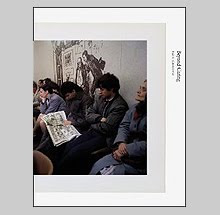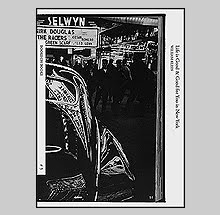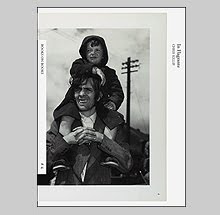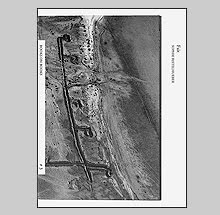Lewis Baltz: Works

Have you ever had a night of pure gluttony? Ever sat down, watching for instance the playoffs for the World Series - seeing both your hometown and adopted town lose - on your lap is a half gallon of ice cream and in your right hand, a spoon. You keep making a mental note that you shouldn't have anymore because the carton is three quarters empty and the edge of your spoon-hand is practically a plaster cast of sugar. Yet you take another spoonful and press the substance to the roof of your mouth making those little half swallows like a baby suckling a breast. While savoring the flavor, the coolness or the slight grit to the ice on our tongue, your hand automatically motions downward for another shovel full. You feel slightly disgusted with yourself. That is how I felt as I kept methodically turning pages of every book in my first choice for Book(s) of the Year - the Lewis Baltz: Works box set from Steidl. I couldn't stop. Just one more picture. Then another, and another, and another, as if the books would disappear off my shelf the following morning.
It probably comes as no surprise that I have been a fan of Lewis Baltz since art school and have sought out his books over the years. I saw him speak once in the late 90s where he recounted a story about showing John Szarkowski of the Museum of Modern Art his New Industrial Parks photographs. While looking at the photos John had made three piles of pictures - when he was finished he showed Lewis the prints the museum would want to purchase. Lewis said he was a bit offended and said they would have to buy all of the set or none - it wasn't divisible.
I shyly asked Lewis about this after the lecture because I didn't understand why he was so offended about John choosing images. I asked "isn't that a curator's job to chose images etc." Baltz responded with a few elegantly worded sentences, 50% of which I couldn't understand because of my stunted vocabulary but what I did comprehend without a dictionary was the idea that dividing up the work could contextualize it differently than if it were kept together. Would a painter cut a canvas if the curator only wanted a section? (Ray Johnson would but who else?). Baltz asked if we could continue the conversation outside so he could smoke but I took the opportunity to slink back into the crowd and disappear being that, although he was extremely nice (Michael Schmidt once described him "with oriental politeness"), I felt completely intimidated by him.
I think I partly respond so strongly to Baltz and Robert Adams and maybe to a lesser extent, Gossage, because the describe landscapes that seem so familiar because I grew up in Arizona where construction/expansion and destruction are linked. Where ideas of money outweigh all common sense. I would ride my bike through entire neighborhoods with paved roads and cul-de-sacs but no homes to be seen - the investors pulled out just before any foundations were laid.
The dividing line between nature and suburb was defined by where paved roads bled into dirt and the no-mans-land strip where people would drag their refuse into the desert for illegal dumping. To come across a sun-blistered washing machine miles from the nearest home in the desert feels like stumbling across a crime scene - violence sensed in the shimmering heat off its surface.
Three books of this ten volume set were released a few years ago through the Whitney Museum and RAM - The New Industrial Parks Near Irvine, California, The Prototype Works, and The Tract Houses. This set includes; Park City, Nevada, Maryland, San Quentin Point, Sites of Technology, Near Reno and Continuous Fire Polar Circle. The only large body of work that is missing is Candlestick Point which I assume was excluded because it is Baltz's only book which is not in a square format.
In comparing some of my older first editions to these some differences can be seen. Firstly, the printing always looked good to my eye with Baltz's books but compared to these new Steidl printings, the plates are more open and yet retain their richness revealing more detail. In Park City, Baltz has moved the captions opposite the images much like in his New Industrial Parks book rather than as a list before the plates start. He also replaced the Gus Blaisdell essay - in the original edition, a "Foreword" which appears afterward - with a newer essay by Hubertus van Amelunxen. Maryland, which was released originally as a booklet from the Corcoran Gallery of Art as a part of the 1976 exhibition The Nation's Capital in Photographs, shows all of the images from the exhibition in their correct order since the catalogue, for whatever reason, is sequenced out of order. Nevada, a 1978 Castelli gallery catalogue I never owned so I cannot compare but this version contains 15 images and I imagine is the same.
All follow the same design and size, all are covered in cloth the color of freshly poured concrete. It was printed in 1100 copies all of which are signed and numbered. I had heard this will be a quick sell out so I hope some of you that can afford the price can still manage to get a set.











